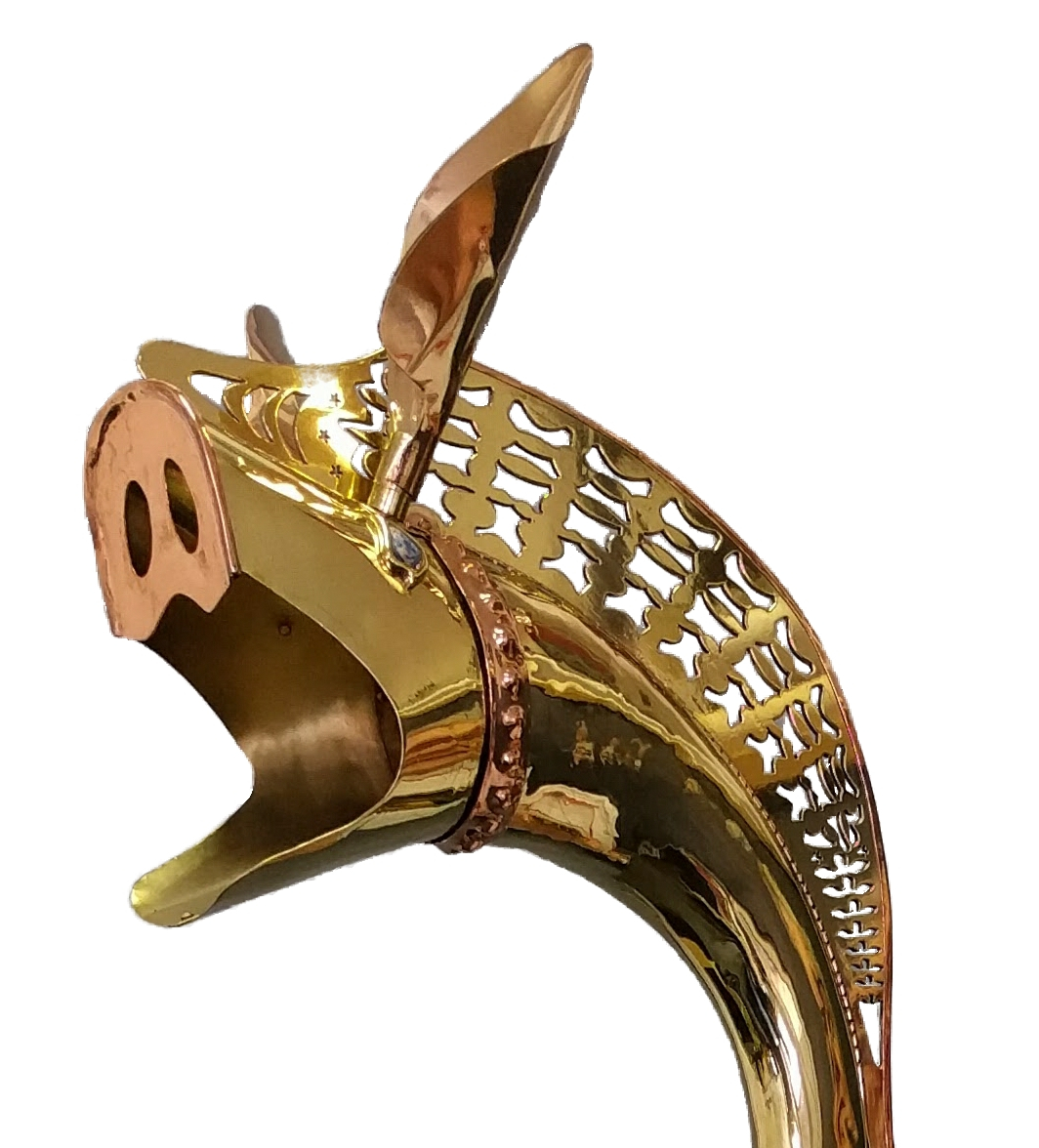Of course, it wasn’t the letter itself which made its claim of importance to brass players during the long, logo-ago European Iron Ages - between around 1000 BCE to sometime quite a lot later! (probably well over a thousand years). Two instruments with a ‘J’-shape were in use for quite a lot of this time, the lituus and the karnyx (carnyx).
The many different native European peoples who inhabited Europe during the iron Age and before Roman terrorists wiped their culture out used a distinctive J-shaped brass instrument, the karnyx (carnyx). Consisting of many different tribes, they lived over a vast area from Northern Italy, south of the Alps right up to the borders of Scotland and the western coasts of Iberia and Wales. To the east, their spread is less certain but evidence of their presence exists into Central Asia. Today the great need to shoehorn societies into convenient categories has resulted in this multitude of vibrant and rich societies being labelled as the Celts. Granted, such a term possessed its own meaning in the ancient world, but coming from the Greeks, as the term Keltoi, it referred to a much smaller grouping of people than is included under the modern-day banner of ‘Celts’. Regardless of the heterogeneity of these peoples, one symbolic brass instrument was seen all over the Native European world - the karnyx. For much of their existance, these peoples passed their culture on verbally so their are no written testimonies as to the everyday life of the karnyx (carnyx). The instrument was formed like the Latin letter ‘J’ and the question remains as to which way up this letter was used. We know from the Etruscan iconography, their tomb paintings described below, that is was mostly depicted pointing downwards. However, as the karnyces (carnyces) had an fantastical animal head at their bell end (something which archaeologists rather fancily call a zoomorphic termination), we tend to believe that the karnyx was played with this animal head up in the air. The idea is supported by an image on the Gunstrup Caudron, an Iron-Age container found in denmark which shows three karnyces (carnyces) held in this way. As the Native Peoples left no writing behind, we are dependent for the term ‘karnyx’ on a single, document written in Greek in relatively-modern times and that’s why I spell it with a ‘k’ rather than the ‘c’ which most writers use at the present time. In the passage above I have used the term karnyces/carnyces to refer to more than one instrument. This is a convenience only as the term appears nowhere in the ancient world and is a mere guess as to how that person writing in Greek might have referred to two instruments.
While its from the illustrations that the Etruscan artists painted for us and the six actual examples which have survived the ravages of time, the instrument’s name of ’lituus’ comes only from Roman authors. Because of that, we have no idea what name the Etruscans might have given to their J-shaped instrument. Sadly, these inventive and brass-instrument loving people have behind next to no writing behind although that nay be an unfair statement as it was the Romans who deliberately wiped out their libraries in order to remove the Etruscan’s written culture from history. Nevertheless, the Romans took over quite a bit of their brass instrument practice from that of the Etruscans and we do know that they used the term ’lituus’ for their J-shaped instrument. It’s for this reason that we refer to the ‘J’-shaped instrument used by the Etruscans as the Lituus. In doing this, we don’t set out to imply that we are employing the same name that the Etruscans did but are simply implying that there was a connection in usage between the Etruscans and Romans and thus borrowing a Roman term. Much of what we know about how the instrument was used comes from the beautiful tomb paintings which Etruscans artists bequeathed to us and we are fortunate that many of these survived the visissitudes of burial and the action of the many robbers who have plundered these tombs since ancient times.
Image: A Modern-Analogue type-copy of a Karnyx (carnyx) made by Peter Holmes
